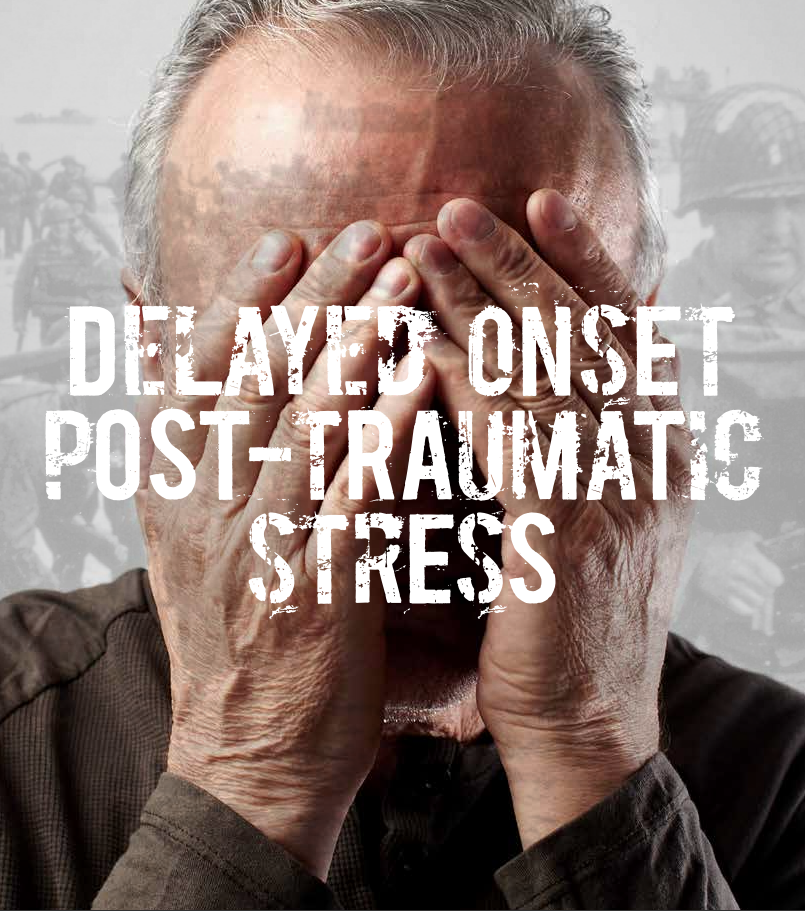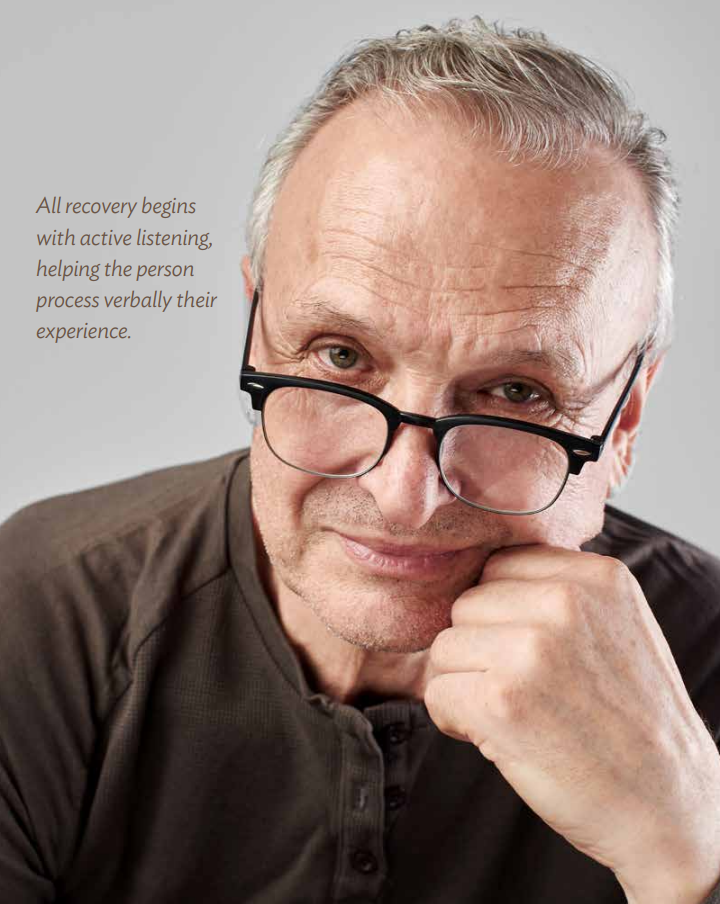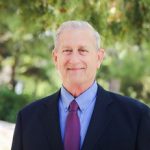
*This is an article from the Spring 2024 issue of Contentment Magazine.
By Jeff Jernigan, PhD, LPC, BCPC, FAIS
Early Tuesday morning, before office hours, the phone rang. Glancing over, noticing who it was, I picked up the phone. My friend was asking if I could help him with a patient consultation. Odd, this time in the morning, to get a call from Chuck outside of even his office hours. Curious and a bit concerned, we began a conversation.
Malcolm is a 91-year-old WWII combat Veteran who followed up his military service later in life with a 30 plus-year career in New Orleans as a policeman. His family was having him evaluated for dementia. They were reasonably concerned about his sudden withdrawal and isolation from a highly active senior lifestyle. He was increasingly depressed, had trouble with short-term memory, and was prone to angry outbursts and temper tantrums from seemingly out of nowhere. None of these symptoms had appeared previously and came on like a thunderstorm almost all at once. Malcolm had trouble sleeping and complained about dreams and nightmares keeping him up at night. Fatigue set in, along with foggy thinking.
Chuck did not think this was dementia for several reasons but wanted to be sure. Malcom’s history indicated that he had weathered WWII and his police career quite well with some post-trauma stress, which was addressed at the time with good results, and had experienced no further problems in an otherwise idyllic life. Some of Malcom’s disturbing dreams were about horrific experiences from those perilous years. So, could it be post-traumatic stress or even post-traumatic stress disorder? If this was the case, why was it happening now after decades of no problems? There didn’t seem to be any apparent triggers involved, and he had never talked about those experiences at all, ever. Therein lay the clue.
Before we go further, let us talk about post-trauma stress and post-traumatic stress disorder, as well as suppression and repression. People often refer to a demanding workday or week, describing themselves as feeling “burned out.” We all understand this expression as signifying how worn out they feel now. Sometimes, after a long, stressful, and possibly traumatic period, some will describe how burned out they feel: exhausted, cannot sleep, poor decision-making, short temper, and so on. They may believe they have post-traumatic stress disorder. This is probably post-trauma stress and not post-traumatic stress disorder. Clinical post-traumatic stress disorder is diagnosed using several steps appearing over a period for adults and children, not through simply identifying a difficult and stressful condition.
Where stress and trauma have caused injury but do not qualify for a diagnosis of post-traumatic stress disorder, it is considered a condition versus a disorder.1 This condition still needs treatment and may include suppressed memories. However, post-traumatic stress disorder will consist of repressed memories as well.
Suppression and repression are related but very different terms. Suppression is a voluntary response strategy for concealing outward expression of experiences associated with strong emotions.2 These memories are pushed away but not forgotten. Repression describes memories that are pushed away and totally forgotten. This is an unconscious process of excluding experiences, memories, or thoughts.3 These are the mind’s way of protecting us from trauma when there is not enough time or opportunity to stabilize or heal. Repressed memories are not gone; they are still there. Suppression acts to make memories less vivid over time, while repression retains the most vivid memories.
Suppression weakens unwanted memories through sustained reduction of neural reactivation.4 This reduces the shutting out of unwanted memories and helps explain why suppressed memories can be triggered more easily than repressed memories. Repressed memories are locked away. However, this reduction in suppression over time makes the emergence of repressed memories more likely as time goes by. For Malcolm, this was a problem. As time went on and life became less busy, there came a time when the mind was ready for healing, and memories, nightmares, and very vivid experiences so real Malcomb felt like he was reliving an experience began to haunt him.
This does not mean there are no symptoms when suppression or repression is involved. They are just more challenging to identify and associate with trauma. Symptoms may be present but not readily associated with anything that happened so long ago in someone’s life. This is likely when attention is directed more toward what might be the problem in the present rather than the past: depression, anxiety, and dementia became suspected causes for Malcomb. When there is no obvious trauma involved, it becomes even more difficult to diagnose post-trauma stress or post-traumatic stress disorder.
Trauma finds its way into our lives throughout our lives. Dealing with the suppressed or repressed memories around trauma can be difficult if there is no actual memory of the stress or trauma at all. This can involve the fetus in the womb due to the mother’s traumatic experiences5 or through changed DNA due to parental trauma experiences passed on to children and grandchildren. There may be no cognitive memory of actual trauma, but the effects are still passed on.
Adverse childhood experiences long forgotten can be triggered in adults many years later with no clues as to why stress and trauma-related symptoms are showing up now. When someone has experienced a significant loss, for example, the grieving process may develop into what is called complicated grief. It seems the person cannot get beyond their grief no matter how much time has passed. This loss may have triggered repressed memories regarding the deceased. This is especially true if the loss was due to unexpected suicide.6 Loss of a business, a home, or a relationship where someone’s competency and self-criticism are acute can trigger repressed memories.7 Sometimes, a traumatic sense of shame and guilt in childhood can be enough to repress memories beyond conscious recall.8 There are many reasons why there may be a delayed onset of post-trauma distress, and having a history of the individual will be crucial to unwrapping the mystery. 
Stress is still stress, whether it is recognized or buried deep in our consciousness. This is another way of saying whether we recognize where the stress came from, it still impacts us. It doesn’t matter if the stressors occurred long ago or more recently. The good news is that late-onset stress and trauma conditions can be treated in the same manner as stress and trauma injuries can be treated in the present. What may be different is post-traumatic growth. Post-traumatic growth has two components: the natural process of recovery and the development of resilience that occurs after initial treatment, and the self-care plan designed to capitalize on natural recovery processes intentionally. Malcomb has to deal with the repressed memories as if they just happened and develop a self-care plan that reflects the reality of starting over in some respects. Then there is the inevitable self-recrimination he gives himself for not seeing this sooner.
All recovery begins with active listening, helping the person process verbally their experience. Not to excess, but to put it into perspective and prepare for the next steps. Ensuring nutrition, exercise, and sleep are not a problem, and checking to ensure meaningful relationships and a sense of purpose are not problems is essential. Reliving repressed memories can be paralyzing, and reassurance is important. Sometimes, rebuilding one’s self-image and worldview may be needed. This is a process and not an event, a journey from where the events took place to where the person is now, with healing along the way. Malcomb will be okay with good support from friends and medical or mental wellness help as needed. If you are that friend to someone, be sure you listen with your heart.
References
- Diagnostic and Statistical Manual of Mental Disorders: American Psychiatric Association, Fifth Edition, 2013 pp 271-280.
- Muhtadie, L, Haase, C et al, Emotion, 21(2): 405-418, 2021.
- Berlin, H, Kock, C, Defense mechanisms: neuroscience Meets psychoanalysis. Scientific American, 20(2): 2009, p16.
- Kreston-Meyer, A, Benoit, R, Cognition and Brain Science: Max Planck Institute for Human Cognitive and Brain Sciences, Germany, Mar 30, 2022.
- Cozolino, L, The Neuroscience of Human Relationships: Attachment and the Social Brain, 2nd Ed: Norton and Company, March 2014.
- Levi-Belz, Y., Interpersonal facilitators of complicated grief and depression in the aftermath of suicide loss: The mediated roles of suicide-related shame and guilt. Suicide and Life-Threatening Behavior, July 2022
- Brott, K., Veilleux, J., Examining state self-criticism and self-efficacy as factors underlying hopelessness and suicidal ideation. Suicide and Life-Threatening Behavior, April 2023.
- Lopez, R., Esposito-Smythers, C., et al. Relations between discrimination, rejection sensitivity, negative affect, and decrements in problem-solving ability following social rejection: An experimental investigation. Suicide and Life-Threatening Behavior, May 2023.
ABOUT THE AUTHOR

Jeff Jernigan is the editor of The American Institute of Stress, Contentment Magazine. He is a board-certified mental health professional known for influencing change in people and organizations by capitalizing on growth and change through leadership selection and development. Jeff currently serves Stanton Chase Pacific as the regional Life-Science and Healthcare Practice Leader for retained executive search and is the national subject matter expert for psychometric and psychological client support services.
A lifetime focus on humanitarian service is reflected in Jeff’s role as the Chief Executive Officer and co-founder, with his wife Nancy, for the Hidden Value Group, an organization bringing healing, health, and hope to the world in the wake of mass disaster and violence through healthcare, education, and leadership development. They have completed more than 300 projects in 25 countries over the last 27 years. Jeff currently serves as a Subject Matter Expert, Master Teacher, Research Mentor, or Fellow in the following professional organizations: American Association of Suicidology, National Association for Addiction Professionals, The American Institute of Stress, International Association for Continuing Education and Training, American College of Healthcare Executives and the Wellness Council of America.
Contentment Magazine
The dictionary defines “content” as being in a state of peaceful happiness. The AIS magazine is called Contentment because we want all of our guests and members to find contentment in their lives by learning about stress management and finding what works best for each them. Stress is unavoidable, and comes in many shapes and sizes that makes being in a state of peaceful happiness seem like a very lofty goal. But happiness is easy to find once you are able to find ways to manage your stress and keep a healthy perspective when going though difficult times in life. You will always have stress, but stress does not always have you!
